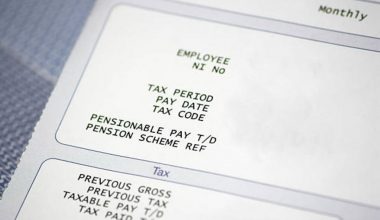An organization’s ownership is reflected financially in equity accounts. Owner payments to a company or residual revenue generated by a company are two ways equity can be acquired. Equity is kept in various kinds of accounts because equity funds come from various sources. Owner’s equity, or what is left over after deducting a company’s liabilities from its assets, is the portion of that entity’s assets that an owner may claim. The balance sheet of a company shows the owner’s equity. To better assist you in comprehending this financial term, we will examine equity accounts in this article, including their various types.
What Is Equity Accounts
A financial representation of a company, business, or organization is called an equity account. Equity accounts frequently differ depending on the entity. For instance, because they must adhere to and fulfill specific legal and financial regulations and requirements, corporations and partnerships frequently use a variety of accounts.
Most equity accounts have balances, which frequently provide information about how well a company is performing. Except for the treasury stock account, all equity accounts have natural credit balances. When a company’s retained earnings account is in the negative, it either means that the company has been losing money or that it has paid out more dividends than it had in retained earnings available.
The power you possess increases as your equity does, and the power you may have decreased as your share ownership increases. The number of shares you purchase may be influenced by voting rights.
Types of Equity Accounts
Each equity account is different and could have a different impact on a company’s balance sheet.
#1. Common Stock
The stock sold to investors at par is known as common stock. The balance in this account may be very low due to par values typically being very low or nonexistent. The par value of a share of stock and the amount that investors invested in a corporation as capital in exchange for ownership of the company is typically reflected on the common stock. The investor’s par value can occasionally be lower, so the account balance could be minimal.
#2. Preferred Stock
The value of the capital investors contributed in exchange for a stake in a company is also recorded in the preferred stock. Because preferred stock shares rarely grant voting rights but instead pay a guaranteed cumulative dividend, few companies frequently issue this kind of stock.
Dividends that are not paid annually typically build up until they are paid. The par value of preferred stock is known as preferred stock. Beyond what is granted to common stock, these shares have unique rights and privileges.
Preferred stock may have been issued in various tranches by some companies, while it may not have been issued at all by others. Preferred stock’s primary characteristic is a fixed dividend payment, which makes it a safer investment for investors.
#3. Additional Paid-In Capital
Investors who purchase stock directly from an issuer are required to pay additional paid-in capital, which is the amount paid over par value. Because most stock certificates have minimal par values assigned to them, the balance in this account can be quite high. The surplus that was contributed is also referred to as additional paid-in capital. What investors paid over the par value of the stock that was sold to them.
#4. Retained Earnings
In contrast to dividend payments to shareholders, retained earnings are the profits a company has made up to this point. Retained earnings are calculated as total revenue less all distributions to shareholders from dividend payments. Total revenue is the amount of revenue a company or organization has generated thus far. Companies occasionally reserve a certain sum of money and, rather than distributing it, reinvest it in the business or use it to settle debts and other obligations. This could improve a company’s long-term outlook, possibly boosting stock ratings and increasing investor payouts.
#5. Treasury Stock
Treasury Stock is a contra account that holds the sum paid to investors to repurchase their shares. This account has a negative balance, which lowers the overall equity. Treasury stock, also known as contra-equity accounts, is the sum given to investors as compensation for stock buybacks. Companies may use treasury stock to reduce the total number of investors in their company. From a company’s perspective, these accounts have a negative balance, which lowers the organization’s overall equity.
#6. Dividends
Dividends are payments made by corporations to their stockholders, typically in the form of common or preferred stock. Dividend payments made by corporations are inversely correlated with distributions made to partners. Dividends lower an organization’s equity on a balance sheet.
#7. Other Comprehensive Income
Since other comprehensive income is made up of earnings that have not yet been realized, it is not included in net income on the income statement. For instance, other comprehensive income includes unrealized gains or losses on securities that have not yet been sold. Following the sale of the securities, the realized gain or loss is reflected as net income on the income statement.
#8. Owner’s Distribution
An owner’s distribution, also known as a partnership equity account, refers to how much cash an owner receives from or takes out of the business based on how much revenue a company generates. Profits may be kept in equity accounts for future working capital needs or used for personal expenses by the owner. The equity and assets of a company may be significantly diminished by these distributions, depending on how much an owner takes.
Why Are Equity Accounts Important?
Equity accounts are significant because they demonstrate a company’s financial standing and the amount of capital invested by its shareholders. Additionally, these accounts support the tracking of a business’ development over time.
When an owner makes a financial commitment to a business, they are purchasing stock in that business. The equity account demonstrates how this ownership is divided into shares and who the respective owners are. Shareholders who are making critical decisions about the company may find this information useful.
What Is Owner’s Equity in Accounting
Owner’s equity, or the value of the company assets that the business owner personally owns, refers to a shareholder’s ownership in the company. It is equal to the sum of the owner’s initial investment less any withdrawals from the business.
Owner’s equity is equal to the sum of the company’s assets less its liabilities.
The balance sheet of a company will show you how much owner equity there is in that company. Assets, or the worth of the company’s possessions, are shown on the left. Liabilities (what the company owes) are shown on the right, followed by owner’s equity (what is left).
Equity in an owner fluctuates over time. After an accounting period, such as a month, quarter, or year, it is listed on the company’s balance sheet.
How Owner’s Equity Works
Owner equity fluctuates according to the various business operations. It rises in correlation with either an increase in owner capital contributions or an increase in company profits. Only by increasing capital expenditures in the company or by boosting profits through higher sales and lower costs can an owner’s ownership interest increase. Owners of businesses who withdraw funds from their owner’s equity are deemed to have made a capital gain and are subject to capital gains tax on the amount withdrawn. It falls off when the owner withdraws funds or when the company experiences a loss.
It rises whenever the owner makes a capital investment or when the company makes money.
What to Include in Owner’s Equity
The two elements to take into account when calculating your owner’s equity are as follows:
- Asset: Something you own is referred to as an asset. This could be anything, such as a home, car, boat, furniture, company, or personal belongings.
- A liability is a debt that has been accumulated against an asset. A liability is something you owe on a loan that you secured with assets, like a home or car loan.
The invested capital and retained earnings, which are defined as follows, are also included in the owner’s equity if you own a corporation:
- Invested capital: This term refers to the money that debt holders and shareholders have contributed to a company.
- Retained earnings: After deducting dividends, retained earnings are the remaining profit a company has at a particular point in time.
Total owner’s equity is produced by adding invested capital to both the initial and ongoing retained earnings.
How to Improve Your Owner’s Equity
Here are some actions you can take to raise your owner’s equity:
#1. Lower your Liabilities
Consider reducing your liabilities to prevent asset depreciation. You could, for instance, replace any existing loans with ones with lower interest rates. As a result, the overall cost of borrowing money will be lower and your liabilities will be reduced. To decrease debt and increase liquidity, you can also sell liabilities that are not necessary.
#2. Repay your Debts
Lowering liabilities can be accomplished by paying off any accumulated debt. You can do this by paying off any outstanding loans’ minimum balances. For instance, if you own a home, you should make more mortgage payments and focus on reducing your debt rather than taking on more. As an alternative, consider raising your monthly auto payment to pay off a loan for an asset that loses value over time, such as a car. By boosting profit margins and lowering risks, debt reduction can benefit businesses as well.
#3. Lower the Cost of Production
Reduce the cost of manufacturing if you are a business owner. This can involve using more cost-effective supplies and machinery, streamlining workflows, reducing the cost of maintaining inventory, or even just monitoring your spending habits concerning those of your company. Additionally, you can invest more money in research and development to see if you can reduce the cost of production while still maintaining the same level of utility and quality for your products.
What Is Equity Meaning in Accounting?
By deducting liabilities from assets, a company’s equity is determined. Intangible assets—those you can not touch but are valuable—and tangible assets—assets the company owns in physical form—can both be considered among these assets.
Is Equity an Asset or Income?
Equity, which refers to anything that a company’s owner invests in it, differs significantly from assets in this way. The asset, on the other hand, is anything that the business owns that will bring it financial advantages in the future.
Contributed funds make up equity. Assets include cash and cash equivalents, real estate, machinery, and equipment, accounts receivable, and deferred taxes.
Is Equity an Asset or an Expense?
Both equity and assets add value to a business, support its operations, and produce profits. Assets are the value that a company currently owns, whereas equity is the investment made in return for a share of the company. Despite the similarities between equity and assets, neither one is a subset of the other. In addition to liabilities, they make up two-thirds of the accounting equation collectively. Therefore, a company’s equity is unable to serve as both an asset and a liability for the business.
Is Equity the Same as Money?
A property’s equity is the sum of money that would remain in the owner’s pocket after the asset has been sold and all associated debts have been settled. A company’s or a person’s equity is the value of their assets less the debts they have attached to them.
How to Calculate Equity?
Liabilities are subtracted from assets to determine equity. The balance sheet of a company will contain all of these numbers. The equity formula states that the sum of the company’s assets less its liabilities equals the total value of the equity.
Conclusion
The money invested by a company’s owners or shareholders is known as equity, and it is used to fund both the initial launch and ongoing operations of the business. The balance sheet of the business also shows total equity, which is the value of assets that remain after all liabilities have been settled. Simply subtract the sum of the liabilities and the assets to arrive at the total equity. The balance sheet’s equity accounts, which show a company’s financial ownership, appear right after the liability accounts. Owners’ equity displays the ownership stake in a company’s value.
Although knowing your owner’s equity can help you assess your financial situation, it is important to keep in mind that it does not accurately reflect the value of your ownership. This is due to several factors, including the fact that owner’s equity is only reported at the time it was calculated and that value changes over time must be calculated again.
Related Articles
- WHAT IS EQUITY IN ACCOUNTING: Definition, How It Works & All You Should Know
- Owner’s Equity Statement: Definition, Analysis, Formula & How to Calculate It
- EXPENSES LIABILITIES: Definition, Types, Examples & Differences
- WHAT IS A CHART OF ACCOUNTS: Definition, Types & Examples






